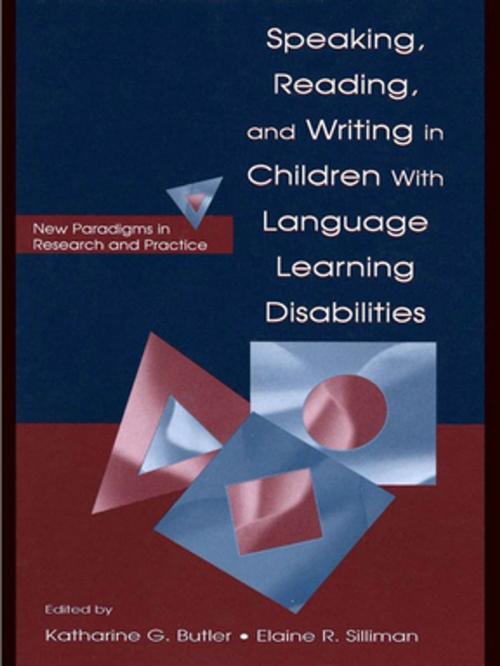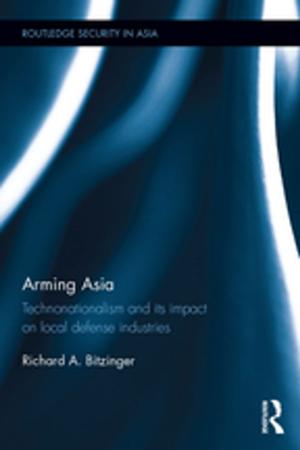Speaking, Reading, and Writing in Children With Language Learning Disabilities
New Paradigms in Research and Practice
Nonfiction, Reference & Language, Education & Teaching, Special Education| Author: | ISBN: | 9781135665920 | |
| Publisher: | Taylor and Francis | Publication: | December 1, 2001 |
| Imprint: | Psychology Press | Language: | English |
| Author: | |
| ISBN: | 9781135665920 |
| Publisher: | Taylor and Francis |
| Publication: | December 1, 2001 |
| Imprint: | Psychology Press |
| Language: | English |
The ability to use language in more literate ways has always been a central outcome of education. Today, however, "being literate" requires more than functional literacy, the recognition of printed words as meaningful. It requires the knowledge of how to use language as a tool for analyzing, synthesizing, and integrating what is heard or read in order to arrive at new interpretations.
Specialists in education, cognitive psychology, learning disabilities, communication sciences and disorders, and other fields have studied the language learning problems of school age children from their own perspectives. All have tended to emphasize either the oral language component or phonemic awareness. The major influence of phonemic awareness on learning to read and spell is well-researched, but it is not the only relevant focus for efforts in intervention and instruction. An issue is that applications are usually the products of a single discipline or profession, and few integrate an understanding of phonemic awareness with an understanding of the ways in which oral language comprehension and expression support reading, writing, and spelling. Thus, what we have learned about language remains disconnected from what we have learned about literacy; interrelationships between language and literacy are not appreciated; and educational services for students with language and learning disabilities are fragmented as a result.
This unique book, a multidisciplinary collaboration, bridges research, practice, and the development of new technologies. It offers the first comprehensive and integrated overview of the multiple factors involved in language learning from late preschool through post high school that must be considered if problems are to be effectively addressed. Practitioners, researchers, and students professionally concerned with these problems will find the book an invaluable resource.
The ability to use language in more literate ways has always been a central outcome of education. Today, however, "being literate" requires more than functional literacy, the recognition of printed words as meaningful. It requires the knowledge of how to use language as a tool for analyzing, synthesizing, and integrating what is heard or read in order to arrive at new interpretations.
Specialists in education, cognitive psychology, learning disabilities, communication sciences and disorders, and other fields have studied the language learning problems of school age children from their own perspectives. All have tended to emphasize either the oral language component or phonemic awareness. The major influence of phonemic awareness on learning to read and spell is well-researched, but it is not the only relevant focus for efforts in intervention and instruction. An issue is that applications are usually the products of a single discipline or profession, and few integrate an understanding of phonemic awareness with an understanding of the ways in which oral language comprehension and expression support reading, writing, and spelling. Thus, what we have learned about language remains disconnected from what we have learned about literacy; interrelationships between language and literacy are not appreciated; and educational services for students with language and learning disabilities are fragmented as a result.
This unique book, a multidisciplinary collaboration, bridges research, practice, and the development of new technologies. It offers the first comprehensive and integrated overview of the multiple factors involved in language learning from late preschool through post high school that must be considered if problems are to be effectively addressed. Practitioners, researchers, and students professionally concerned with these problems will find the book an invaluable resource.















